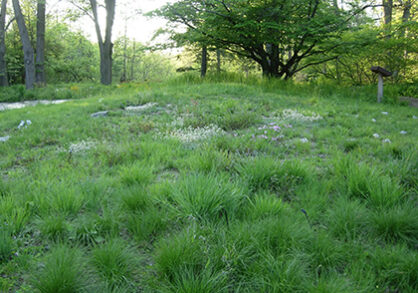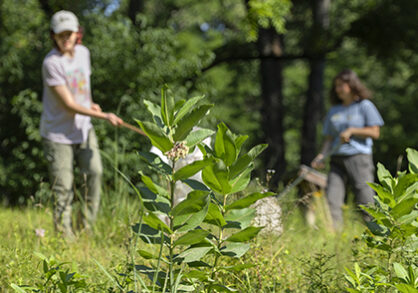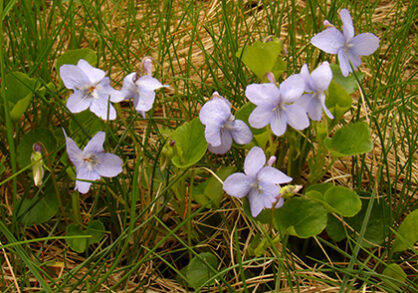This native lawn demonstration project aims to create a shift in how we design and landscape our homes and public greenspaces, and ultimately advance sustainability itself. This project converted a non-native grass (and weed) lawn to a low-maintenance, low energy input, and high biodiversity, sustainable native lawn.
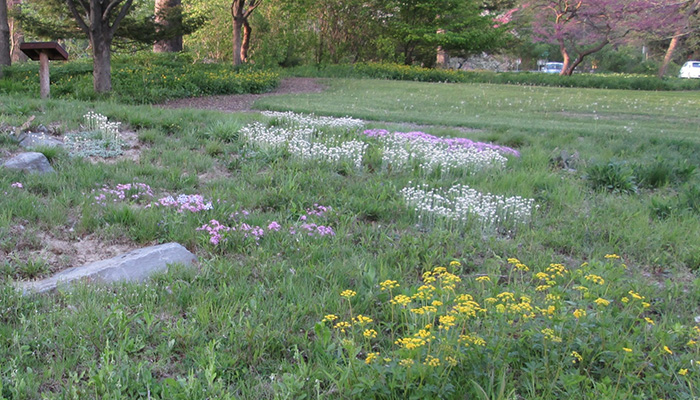
Our goals were simple, and focused on maintaining or even enhancing the traditional aesthetics of a turf lawn. We wanted it to be able to tolerate a moderate amount of tramping, and wanted to minimize watering, eliminate fertilizer and pesticide inputs, and require minimal hand weeding. We also wanted to significantly curtail carbon dioxide emissions by only mowing it once to twice a year. One primary measure of success was to cover at least 85% of the area with native plant species, which increases the overall biodiversity of pollinators and other fauna.
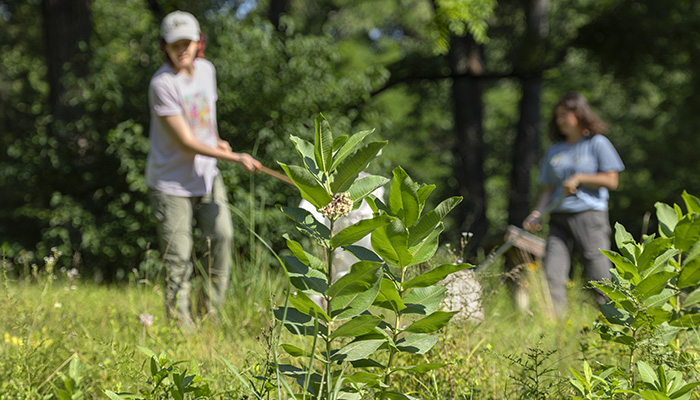
Ten species of forbs and eleven species of grasses and sedges were originally planted in 2009, and some woodland and meadow herbs have been added. Plant species were selected that are suitable for both full sun and shady as well as wet and dry conditions Danthonia spicata and Danthonia compressa (poverty oat grass) are dominant in the planting. Penstemon hirsutus is also widely planted. Twenty nine native species have established spontaneously from the adjoining natural area or seedbank, including a number of violet species, several woodland asters including calico, heart-leaved, and frost asters, and Lobelia siphilitica, or great blue lobelia, which is a very attractive valuable pollinator species.
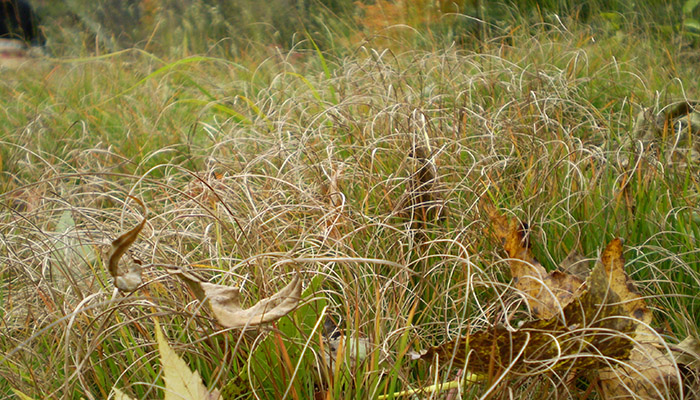
Verdant Views: Native Lawn 11/14/23 from Cornell Botanic Gardens on Vimeo.
What Makes it Sustainable?
Compared to traditional turf grass lawns they:
- Require no fertilizer, which uses energy and emits a significant amount of nitrous oxide, a greenhouse gas, during its production.
- Require no pesticides.
- Provide a diversity of native plants that supports over four times more biodiversity for pollinators and other invertebrates.
- Require minimal mowing, which reduces the amount of gas used and greenhouse emissions from lawnmowers.
- Require minimal to no watering.
- Used as a teaching landscape for University classes and the public.
- Serves as a demonstration for encouraging the implementation of a native lawn in a home landscape.
Why this is important?
In the United States:
- Traditional turf lawns account for approximately 2% of land, or approximately 40 million acres in lower 48 states (equivalent to Wisconsin).
- Lawnmowers account for 5% of the nation’s air pollution. Homeowner mowing consumes over 800 million gallons of gasoline annually, resulting in 7.1 million tons of CO2 emissions, and more than the entire state of Vermont emits. In 1 hour, a lawn mower produces as much air pollution as driving a car for 100 miles. In order to offset the CO2 emissions from the average 10 gallons of gas required annually, eight 2” diameter sugar maple trees would need to be planted here in the northeast.
- The typical American spends 70 hours a year on average mowing a home lawn.
- Homeowners use 10 times the amount of pesticide and fertilizers per acre on their lawns as farmers do on crops. Approximately 90 million tons of pesticides and fertilizers are applied on lawns annually.
- American lawns take up an area three times larger than that of any other irrigated crop in the country. On the East Coast, 30% of the water consumed goes to watering lawns.
- 25%- 40% of landfill space is taken up by grass clippings from mowed lawns
source: Native Plants for Wildlife Habitat and Conservation Landscaping Chesapeake Bay Watershed, USDA Climate Change Resource Center Tree Carbon Calculator
Explore More
A Viable Alternative to Conventional Lawn? Cornell May Have Found One.
New York Times – September 13, 2023
Cornell Botanic Gardens’ native lawn was featured in the New York Times as a viable alternative to conventional lawns and an action every homeowner can take to address the climate crisis and give nature a helping hand.
All about our Native Lawn
A lawn sown with native grasses does a world of good. Learn why and how to create one.
Create a garden for native bees of New York and the Northeast
Download this guide for growing plants for the native bees critical to biological diversity and depend on specific plants to raise their young. Published by the Pollinator Network @Cornell.
